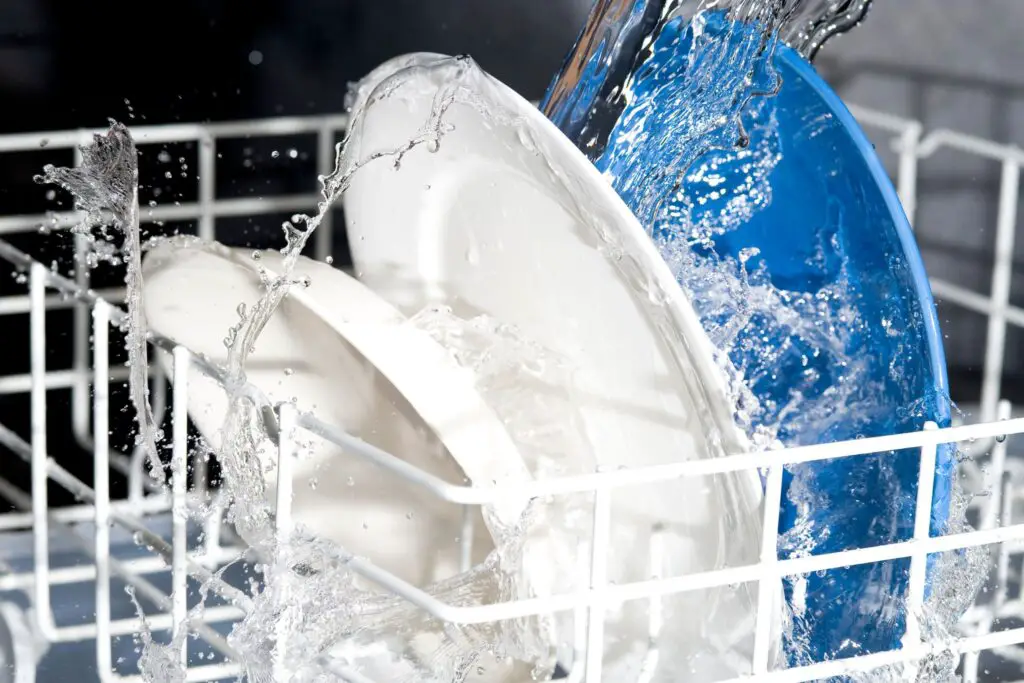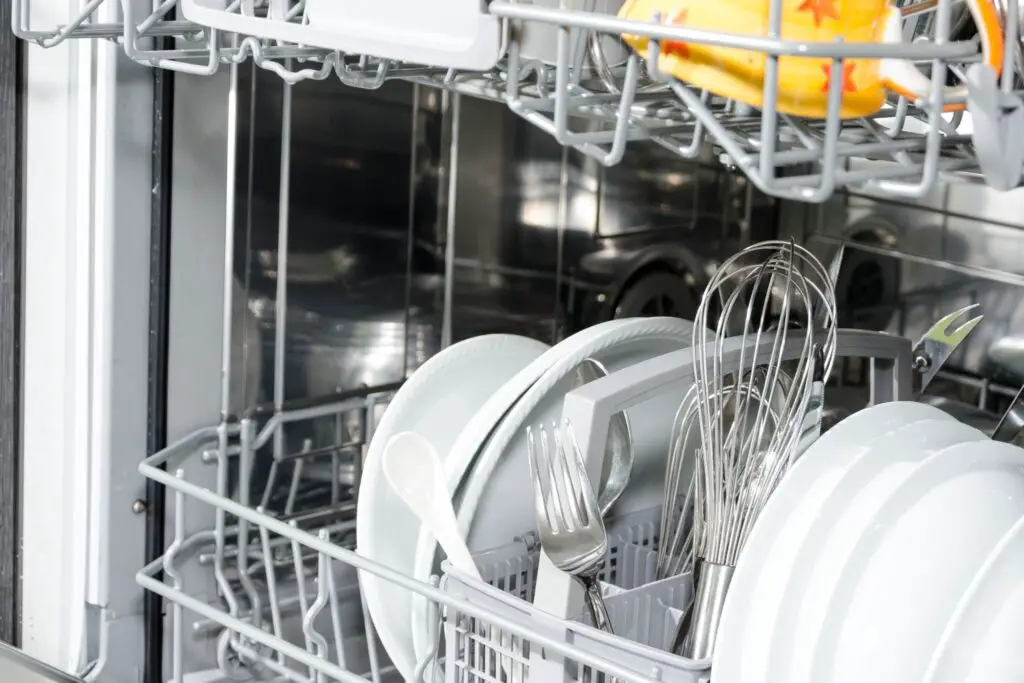Originally Created on: March 28, 2023 @ 9:32 am
How do countertop dishwashers drain? Countertop dishwashers are a great way to save space in your kitchen and still get the job done.
While they come in various sizes and styles, they all have one thing in common: they need to be able to drain properly.
Countertop dishwashers are designed to drain to a sink or faucet. Some models use a tool known as a ‘unicouple,’ which can be outfitted to your kitchen faucet.
This unicouple has two hoses, one for water intake and one for draining. No matter which countertop dishwasher you own, it must drain properly to avoid clogs.
You May Also Like: Can You Put A Countertop Dishwasher Under The Sink? [+ 4 TIPS]
Table of Content
How Do Countertop Dishwashers Drain
Unlike conventional dishwashers with a motor designed to push out the water to the garbage disposal, countertop dishwashers rely on gravity to pull water out. They are designed to drain water through a hose connected to the sink or garbage disposal.
The hose is either located under the sink or behind the dishwasher and is usually 5/8” or 7/8” in diameter.
The end of the hose is connected to a drain outlet on the dishwasher, which is then connected to the sink or garbage disposal.
The water from the dishwasher flows through this hose and empties into the sink or garbage disposal.
The draining works conveniently since it is above the dishwasher (gravity helps the water to flow down).
That being said, ensuring the hose connection is secure and functional is important.
For optimal draining, it is recommended that the dishwasher remains level. This ensures a proper water flow and helps avoid clogs due to air bubbles.
If you need to drain the dishwasher directly into a sink, be sure to check for any clogs or blockages in the hose.
Do Countertop Dishwashers Need a Water Line?

Typically yes, but some don’t. It majorly depends on the type of countertop dishwasher you have. Countertop dishwashers are smaller than full-size models and require less water, but they still need a proper water line.
The most common way to connect a countertop dishwasher is by connecting it directly to the kitchen sink faucet with an adapter.
This adapter will allow the dishwasher to draw water from the main sink faucet. This option is generally only suitable for single use and may require an additional shut-off valve installed near the sink faucet for convenience.
Countertop dishwashers can sometimes be connected permanently to a water source and drain.
Some can be permanently installed as an under-counter dishwasher, while others can be connected directly to your home’s main water supply.
However, this requires more plumbing work and should only be done by a professional plumber or appliance technician.
Also Read: Do Countertop Dishwashers Have Water Heating Elements [ULTIMATE Truth]
Some models do not require a water line at all. These countertop dishwashers often come with pre-filled reservoirs that hold enough water for one cycle.
You will need to refill the reservoir after each cycle. It is a great option if you do not have access to a water line or the drain adapters aren’t compatible with your faucet.
Are Countertop Dishwashers Water Efficient?

Countertop dishwashers are a great way to save space in the kitchen, but are they also a great way to save water? The answer is yes! Countertop dishwashers can be as efficient as their full-sized counterparts when conserving water.
But how are countertop dishwashers water efficient? Modern countertop dishwashers use about a quarter of the water-full dishwashers use per cycle. This means they can save up to 80% of water per cycle.
While their capacities are smaller, many countertop models have special features such as adjustable water pressure and temperature settings. This allows you to customize your cleaning experience and reduce water usage.
When shopping for a countertop dishwasher, look for models certified by ENERGY STAR. These models use less energy and water than standard models, helping you save money on utility bills while still getting sparkling clean dishes.
Additionally, wipe down your dishes before putting them in the machine and only run full loads whenever possible; this will help you get the most out of every cycle and conserve even more water.
What Triggers the Drain Cycle on a Countertop Dishwasher?

Typically, a dishwasher spins water through the interior while cleaning the dishes. The water is then drained outside to the sink drain or garbage disposal.
But what triggers the drain cycle on a countertop dishwasher? Some models drain the water as they clean. The water will drain out during the whole cleaning cycle.
However, other models have the drain cycle of a countertop dishwasher triggered by either the water level or the timer.
When the water level reaches a certain point, it will activate the drain cycle, which pumps out the used wash water and expels it through the drain hose.
Alternatively, the timer on a countertop dishwasher will open the drain valve and reverse the pump to expel the wash water. This ensures that all dirty water is removed from your dishes for a thorough cleaning.
Conclusion
Countertop dishwashers are a great way to save space in the kitchen and still get the job done. But how do countertop dishwashers drain? They are designed to drain to a sink or faucet using a unicouple or a hose.
The water is drained through gravity and must remain level to avoid clogs. Countertop dishwashers usually need a water line; some models have pre-filled reservoirs.
Countertop dishwashers are water efficient, using only a quarter of the water full-sized models use, and ENERGY STAR-certified models save even more.
While some countertop dishwashers drain during the cleaning cycle, others use a timer or water level to trigger the drain cycle.

![How Do Countertop Dishwashers Drain [The SURPRISING Answer]](https://mykitchenapex.com/wp-content/uploads/2023/03/How-Do-Countertop-Dishwashers-Drain-The-SURPRISING-Answer.jpg)